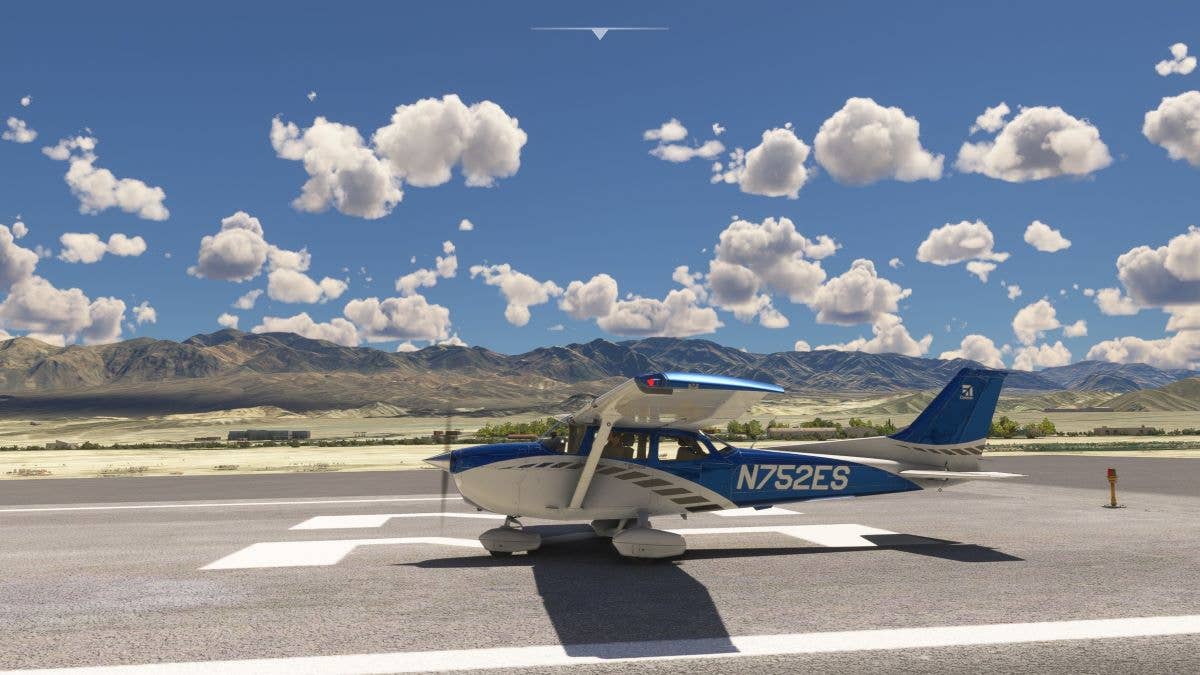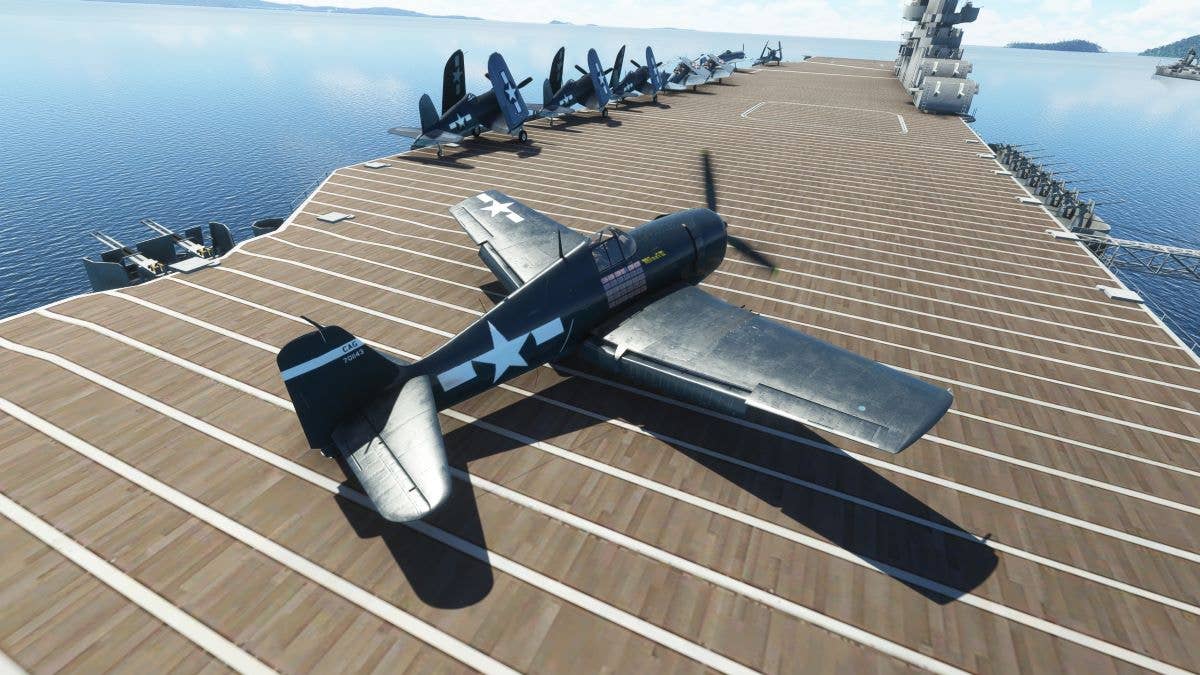Reaching Uncharted Corners of the Globe in a Fokker F.VII
Ride along on a Microsoft Flight Simulator journey through history in one of the world’s first civilian airliners.

The F.VII’s fuselage was fabric stretched over a steel-tube frame. [Courtesy: Patrick Chovanec]
Today in Microsoft Flight Simulator 2020 I’m going to be flying the Fokker F.VII, one of the world’s first civilian airliners that blazed new paths to uncharted reaches of the globe in the hands of aviators like Richard Byrd and Charles Kingsford Smith.
Anthony Fokker was Dutch, born in the colonial East Indies. In 1910, at age 20, he moved to Germany to pursue his interest in aviation. He soon founded his own airplane company there, and during World War I it designed a number of successful and famous fighter planes for the Germans. Fokker himself was an accomplished pilot. I wrote a previous article on the Fokker Dr.I triplane, which you can check out here.
- READ MORE: Recreating the Final Flight of the Red Baron
After losing WWI, Germany had to surrender all its warplanes and aircraft factories, including Fokker’s factory, under the Treaty of Versailles. Fokker, however, was able to bribe railway and border officials to smuggle some of his equipment back to his native Netherlands. That equipment allowed him to reestablish his company in Holland and design the Fokker F.VII, a single-engine transport for the fledgling postwar civilian market. I’m in one of those models here, in KLM colors, at Amsterdam’s Schiphol Airport (EHAM).
The F.VII’s fuselage was fabric stretched over a steel-tube frame. Its wings were plywood-skinned. The original, single-engine version of the F.VII was powered by a variety of different models of radial engines, which ranged from 360 to 480 hp. Inside there was room for eight passengers, as well as a bathroom (the door to my right here).
The cabin was connected to the two-man cockpit by a little door under the fuel tank and starter switches. On the instrument panel, from left to right: oil pressure and temperature, altitude, another oil temperature gauge, air speed indicator (with a turn indicator below it), clock, and rpm tachometer. Around the cockpit you can see all the wires and pulleys connecting the controls to the flight surfaces outside. Turn or push the yoke and they quite clearly move. Fly by wire, indeed. The compass is basically a bowl with a magnet floating in it.
The designer of the initial F.VII was Walter Rethel, who was later hired by Willy Messerschmitt and went on to design the famous Bf 109, the main German fighter at the start of World War II.
With a single engine, even a fairly powerful one for its time, the Fokker F.VII didn’t exactly spring off the ground. It lumbers into the air and climbs gradually. Nevertheless, in the early 1920s, the F.VII became a successful early passenger transport for early airlines such as Dutch KLM and Belgian Sabena. Here I am flying over the historic center of Amsterdam.
In 1924, the F.VII even introduced flights from Amsterdam to the East Indies. Needless to say, it wasn’t nonstop and could take many days.
In 1925, automakers Henry Ford and his son Edsel began the Ford Reliability Tour, a challenge for aircraft to successfully complete a 1,900-mile course across the American Midwest with stops in 10 cities. To compete in Ford’s challenge, and make the airplane more reliable in general, Fokker had the F.VII redesigned to have three engines, adding two mounted on the side struts. The new F.VIIb/3m, decked out here in Sabena colors and flying over Brussels, became immediately popular, with 154 built. Each of the three engines was a 200 hp Wright J-4 Whirlwind.
Belgian tycoon Alfred Loewenstein, calculated to be the third-richest man in the world at his peak in the 1920s, even owned his own private Fokker F.VII. Flying over the English Channel in 1928, he had one of the most unfortunate bathroom breaks in history. You see, the door to the bathroom (left) is directly across from the door to the outside (right). It seems Loewenstein opened and walked through the wrong one and fell to his death in the water below. Though to this day, some still suspect it was murder. There’s even a book about this incident, The Man Who Fell from the Sky by William Norris.
If that were the sum of the F.VII’s history, it might be pretty uninspiring. But to tell the rest of it, I’m here at Spitsbergen in Norway’s Arctic archipelago of Svalbard for Byrd’s flight to the North Pole. Richard Byrd was a U.S. naval officer who commanded air patrols out of Halifax, Nova Scotia, during WWI. He played an active but supporting role in the first attempts to cross the Atlantic by air, and in 1926 had his big shot at fame. His Fokker F.VIIa/3m, mounted on snow skis, was named the Josephine Ford, after the daughter of Edsel Ford, who helped finance the expedition.
This was a two-man expedition, with Byrd accompanied by Navy Chief Aviation Pilot Floyd Bennett. The passenger seats were torn out and replaced with extra fuel tanks and emergency supplies.
The inside of the cockpit is quite similar to the one-engine version but with three separate throttles and tachometers (showing rpm). There was no airport in Svalbard at the time, so they had to take off from a snow-covered field—hence the skis. Byrd’s flight, from Svalbard and back, took 15 hours and 57 minutes, including 13 minutes spent circling at their farthest north point, which Byrd claimed, based on his sextant readings, to be the North Pole.
Did he really reach the North Pole and become the first to fly over it? This remains hotly disputed to this day, with some researchers claiming that he faked his sextant readings and fell short of his goal. In that case, the true prize would belong to Norwegian Roald Amundsen, already the first to reach the South Pole by land, in his airship Norge.
A few observations about flying the Fokker F.VII, at least in the sim. First, it’s not very stable, in the sense of wanting to correct back to straight and level flight. It’s sensitive to being loaded either nose-heavy or tail-heavy and requires a lot of control input. Second, that big wing really likes to glide. To descend without overspeeding, I basically have to put all three throttles back to idle and glide down.
Last, there are no differential brakes and no tailwheel. That makes the F.VII extremely hard to control on the ground, even just to taxi. That’s especially true on snow skis.
Whether Byrd truly did reach the North Pole or not, he became a huge national hero when he returned to the U.S. Byrd and Bennett were both presented with the Medal of Honor by then-President Calvin Coolidge at the White House.
The following year in 1927, Byrd outfitted a new Fokker F.VII/3m, named America, to bid for the Orteig Prize, promising $25,000 for the first nonstop flight from New York City to Paris (or vice versa). Anthony Fokker himself had recently moved to the United States and was part of the team preparing Byrd and his crew—the odds-on favorite—for the Atlantic crossing. During practices, however, America—piloted by Fokker himself—crashed, injuring both Byrd and Bennett and postponing their attempt. As a result, while America was being repaired, Charles Lindbergh—an unheard-of underdog—made the flight solo in the Spirit of St. Louis, becoming an aviation legend.
- READ MORE: Simulating a Bombing Raid in an F-16
The Fokker F.VII would still achieve fame, though, crossing a different ocean at the hands of Australian pilot Charles Kingsford Smith in 1928. If you’ve ever passed through Sydney Kingsford Smith Airport (YSSY) and wondered who it’s named after, you’re about to find out. (If you’re an Australian, you already know).
Movie star handsome Smith, known as “Smithy,” fought as a combat engineer at Gallipoli in WWI but soon joined the Royal Air Force as a pilot. He was shot down, injured, and returned to become a flying instructor in Australia. From that day, Smith had a dream to cross the Pacific Ocean by air from the U.S. to Australia. By 1928 he was ready to try to achieve that goal. That’s why I’m here at Oakland Municipal Airport (KOAK) in California, where he took off in his Fokker F.VIIb/3m Southern Cross. Not unlike Byrd’s airplane, the inside has been altered to make space for extra fuel tanks.
At 8:54 a.m. on May 31, 1928, Smith and his four-man crew lifted off from Oakland on the first leg of their journey to Hawaii. At the time, flying to Hawaii, much less Australia, was an extremely daunting prospect. While they had a radio with limited range, there were no radio beacons to guide them. They could only estimate a course based on the latest, often inaccurate, weather reports over the Pacific and hope that unexpected winds wouldn’t blow them off course and make them miss Hawaii entirely. As they flew over the Golden Gate— the bridge hadn’t been built yet—they knew that several aviators before them had estimated wrong and simply vanished into the vastness of the Pacific.
The first stage from Oakland to Hawaii covered 2,400 miles and took 27 hours and 25 minutes (87.54 mph). It was uneventful. But one can only imagine their joy as they arrived here over the northeast shore of Oahu.
They landed at Wheeler Army Airfield in the center of Oahu. The Southern Cross was the first foreign-registered airplane to arrive in Hawaii and was greeted at Wheeler by thousands, including Governor Wallace Rider Farrington. Smith and his crew were put up at Honolulu’s pink Royal Hawaiian Hotel to rest for the next stage.
- READ MORE: A Virtual History of the Piper Cub
The runway at Wheeler was too short for the Southern Cross to take off fully loaded, so they flew to Barking Sands on the west coast of Kauai, where a special runway had been constructed. They took off from Barking Sands at 5:20 a.m. on June 3, bound for Suva in Fiji.
The journey from Hawaii to Fiji was 3,155 miles—the longest flight yet over continuous seas. It lasted 34 hours and 30 minutes at an average speed of 91.45 mph.
Halfway across near the equator, the Southern Cross encountered a tropical thunderstorm. Keep in mind, the crew did not have the benefit of an artificial horizon. The only way it could keep level, flying blind, was keeping a close eye on airspeed, altitude, and the inclinometer (or turn indicator). Somehow, the crew weathered the storm and kept going.
The crew undoubtedly felt great relief when it spotted the green landscape of Fiji ahead. There was no airport at that time, so the Southern Cross landed on a cricket field. Once again, it was far too small to use to take off again, so after a few days' rest, the crew relocated to a beach from which to depart for the next and final leg of the journey. Leaving Fiji on June 9, the aviators embarked on their final 1,683-mile stretch home to Australia.
Once more they encountered storms, which blew them nearly 150 miles off course. Even when the weather was clear, the unrelenting and trackless ocean must have been overwhelming.
The Southern Cross reached the Australian coastline near Ballina, well south of its intended target, and turned north toward Brisbane. As the crew reached Brisbane, it was greeted by an aerial escort. The goal was Eagle Farm Airport northeast of the city—now the location of Brisbane’s main international airport.
The Southern Cross had flown 7,187 miles (11,566 kilometers) in 83 hours and 72 minutes. The Pacific Ocean had been conquered by the air for the very first time. A crowd of 26,000 greeted Smith and his crew when they touched down at Eagle Farm.
Smith died in 1935 at 35 when his airplane disappeared over the Indian Ocean while attempting to break the England-Australia speed record. His career was filled with both triumph and scandal, but he is still considered Australia’s great aviation hero. If you visit Brisbane’s airport, you can still see the real Southern Cross on display in a dedicated hangar.
The Fokker F.VII continued as a popular airliner into the 1930s. However, the vulnerability of its fabric-and-wood construction became apparent following a 1931 TWA crash that resulted in the death of famed University of Notre Dame football coach Knute Rockne. As a result, the Fokker F.VII gave way to all-metal airliners such as the Boeing 247, Lockheed L-10 Electra, and eventually the DC-3.
One of the most popular early successors to the Fokker F.VII was the Ford Trimotor, basically an all-metal version of the F.VII. For all their sponsorship, the Fords seem to have gotten something out of it in the end. Anthony Fokker, nicknamed “The Flying Dutchman,” lived most of the rest of his life in the U.S. and died at 49 in New York in 1939 from pneumococcal meningitis.
If you’d like to see a version of this story with more historical photos and screenshots, you can check out my original post here. This story was told utilizing the “Local Legend” Fokker F.VII add-on to Microsoft Flight Simulator 2020, along with liveries and scenery downloaded for free from the flightsim.to community.

Subscribe to Our Newsletter
Get the latest FLYING stories delivered directly to your inbox






